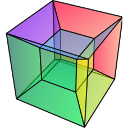Tips for writing methods that work on lazy signals#
With the addition of the LazySignal class and its derivatives, adding
methods that operate on the data becomes slightly more complicated. However, we
have attempted to streamline it as much as possible. LazySignals use
dask.array.Array for the data field instead of the usual
numpy.ndarray. The full documentation is available
here. While interfaces of
the two arrays are indeed almost identical, the most important differences are
(da being dask.array.Array in the examples):
Dask arrays are immutable:
da[3] = 2does not work.da += 2does, but it’s actually a new object – you might as well useda = da + 2for a better distinction.Unknown shapes are problematic:
res = da[da>0.3]works, but the shape of the result depends on the values and cannot be inferred without execution. Hence, few operations can be run onreslazily, and it should be avoided if possible.Computations in Dask are Lazy: Dask only preforms a computation when it has to. For example the sum function isn’t run until compute is called. This also means that some function can be applied to only some portion of the data.
The easiest way to add new methods that work both with arbitrary navigation
dimensions and LazySignals is by using the map method to map your function func across
all “navigation pixels” (e.g. spectra in a spectrum-image). map methods
will run the function on all pixels efficiently and put the results back in the
correct order. func is not constrained by dask and can use whatever
code (assignment, etc.) you wish.
The map function is flexible and should be able to handle most operations that
operate on some signal. If you add a BaseSignal with the same navigation size
as the signal, it will be iterated alongside the mapped signal, otherwise a keyword
argument is assumed to be constant and is applied to every signal.
If the new method cannot be coerced into a shape suitable for map, separate
cases for lazy signals will have to be written. If a function operates on
arbitrary-sized arrays and the shape of the output can be known before calling,
da.map_blocks and da.map_overlap are efficient and flexible.
Finally, in addition to _iterate_signal that is available to all HyperSpy
signals, lazy counterparts also have the _block_iterator method that
supports signal and navigation masking and yields (returns on subsequent calls)
the underlying dask blocks as numpy arrays. It is important to note that
stacking all (flat) blocks and reshaping the result into the initial data shape
will not result in identical arrays. For illustration it is best to see the
dask documentation.
For a summary of the implementation, see the first post of the github issue #1219.
